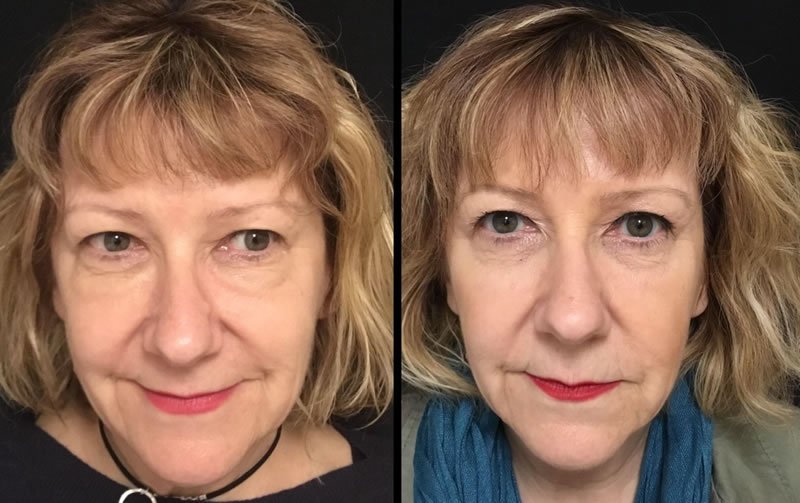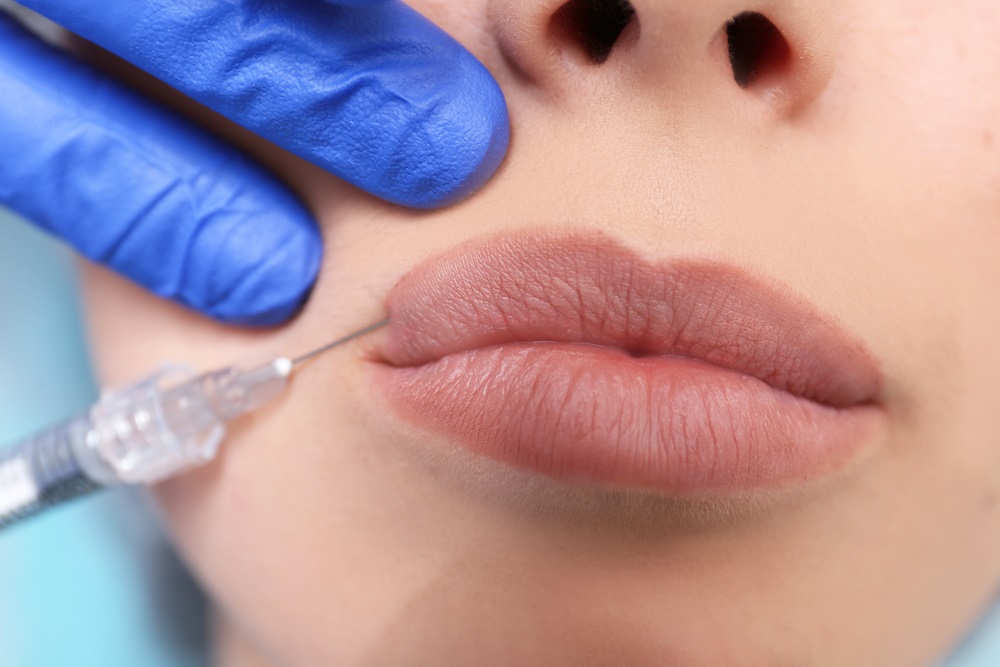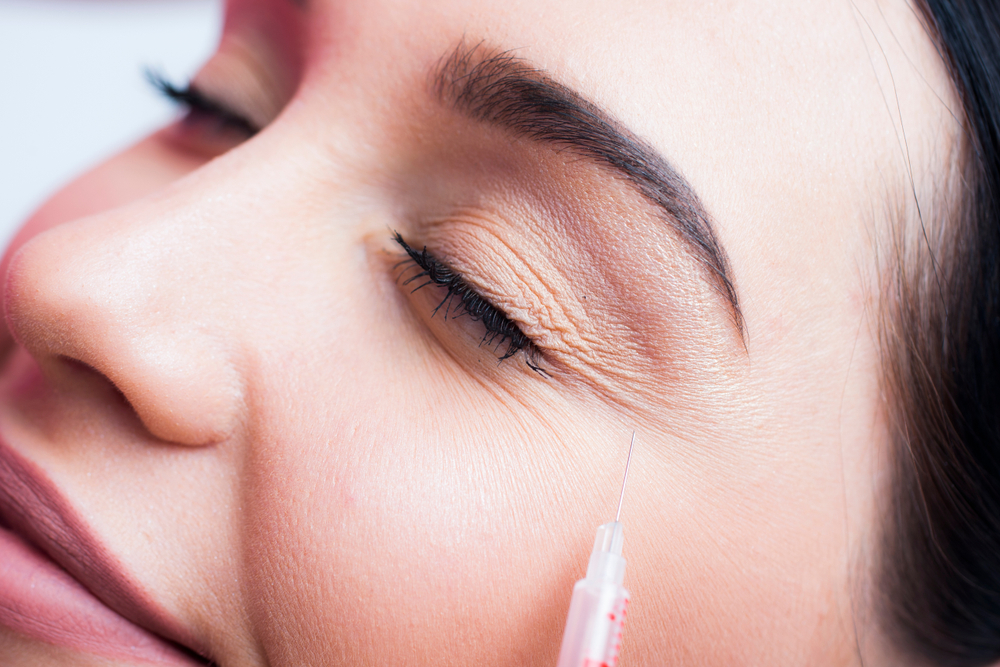- Hyaluronidase is an enzyme present in products used to remove certain FDA approved facial fillers.
- It is injected under the skin to speed up the natural disintegration of hyaluronic acid, which is the active ingredient in some facial fillers.
- Patients that seek treatment with the hyaluronidase enzyme usually do so to eliminate or lessen the effects of a facial filler treatment they have had.
- Results of a hyaluronidase injection are generally apparent within the first 24 hours, but in some cases can be seen in less than an hour.
How do hyaluronic acid-based fillers work?
To understand how hyaluronidase works, it is first important to understand the injectable dermal fillers it works to dissolve. Hyaluronic acid-based fillers are a class of injectable dermal fillers that includes Belotero, the Restylane products, and the Juvéderm products Voluma and Volbella.
Dermal filler injections are an effective and popular method of temporarily smoothing out facial wrinkles and fine lines, restoring volume to areas of the face that have sunken and become hollowed over time, and improving the contours of the cheeks or lips, all while avoiding invasive surgery and extensive downtime.
When performed by a qualified, experienced injector, dermal filler injections typically have subtle, natural-looking results, and most patients are ecstatic about the outcome. However, no cosmetic treatment is foolproof, and even the most talented injectors cannot promise great results to every patient.
Dermal fillers gone wrong
Over the years, the popularity of dermal fillers has steadily increased due to their effectiveness in filling in depressions and hollow facial areas and improving the overall shape of the face. Cosmetic practitioners are continually acquiring more skill and improving their ability to restore volume to the face.
Although serious adverse effects are rare, an increase in procedures does mean an increase in the potential for complications or unsatisfactory results.
A patient may want or need to remove facial filler for a variety of reasons. For example, some patients make the mistake of entrusting their treatment to a novice or unqualified practitioner, and end up paying for it when the practitioner injects too much filler, places the filler in the wrong spot, or fails to properly manipulate the filler so as to produce symmetrical results.
“Situations in which patients will want to remove a portion of an injected filler are those in which there is a noticeable excess or lump in the area, where they can feel the mass effect of the filler, and also when there are more serious problems after the injection of filler,” says Fred Fedok, MD, President of the American Academy of Facial Plastic and Reconstructive Surgery (AAFPRS). “The kind of more serious issues include vascular problems that can lead to compromise of the skin and even vision loss.”
Another reason to remove a filler is if there is an inadvertent injection into a blood vessel, according to Earl M. Johnson, Jr., MD, a board certified plastic surgeon in Falls Church, Virginia. “This can cause tissue death and lead to disastrous complications,” he says. “Should this happen with a hyaluronic filler, the filler can be removed with hyaluronidase and the disaster averted.”
How does hyaluronidase work?
Hyaluronidase — also known as hyaluronan — is an enzyme that works by breaking down the hyaluronic acid, a sugar that is present in the connective tissues. This renders the sugar less viscous and increases the permeability of the tissue.
Sold under the brand names Hydase, Hylenex and Vitrase, hyaluronidase enzymes are highly effective in dissolving hyaluronic acid-based facial fillers. When injected into the affected area(s) they cause the hyaluronic acid to break down at an accelerated pace, so that you don’t have to put up with an unwanted appearance for months on end.
You don’t have to wait a specific amount of time after dermal filler treatment before receiving treatment with hyaluronidase; the enzyme can be administered right after an injection of a hyaluronic acid-based filler product, if need be, so long as the injection site has stabilized.

What is the cost of hyaluronidase?
Hyaluronidase cost depends on how many rounds of hyaluronidase injections you need, and varies from practitioner to practitioner based on geographic location, the injector’s experience and other factors.
That being said, an injection round may cost around $100 to $200, depending on the amount you need. Note that you may need more than one round and potential large amounts of hyaluronidase to fully dissolve the filler.
Are there any side effects from hyaluronidase?
According to Fedok, the simplicity of hyaluronidase makes it the most effective way to remove hyaluronic acid filler. Samuel Lin, MD, a board certified plastic surgeon in Boston, concurs, but notes that there are potential hyaluronidase side effects.
“Patients should be aware it could potentially result in removal of a greater amount of filler than desired, and also carries a risk of causing allergic reaction due to the animal products it contains,” says Lin.
Are there any alternatives to remove hyaluronic acid fillers?
There are other methods. “Soon after being injected, hyaluronic acid fillers can be aspirated, in part, with a larger bore needle,” Fedok says. But obviously this is a less-attractive option as compared to a simple injection of hyaluronidase.
It’s important to note that hyaluronidase can only be used on hyaluronic acid-based fillers. It will not work on other fillers like Radiesse, Bellafill and Sculptra. These fillers are removed by other means.
“Potential methods to reverse non-hyaluronic acid fillers include the use of steroid injections, but this is not guaranteed, or waiting for the filler to naturally fade or disappear, although this may take a year or longer,” says Lin. “In certain scenarios, albeit rare, surgical excision may be performed.”
How long will it take for hyaluronidase to dissolve fillers?
The availability of hyaluronidase should not be taken to mean that hyaluronic acid-based fillers are bad. In fact, as Fedok explains, the fact that hyaluronic acid-based fillers can be dissolved if something goes wrong makes them a very attractive option, and in this sense sets them apart from other types of fillers.
Results of a hyaluronidase injection for dermal filler removal should be apparent within the first 24 hours, but it depends on how much is injected and who the injector is. Sometimes results may appear within the first half hour. To better understand the likely outcome of your treatment you will need to consult with a qualified practitioner who performs hyaluronidase injections.
Do I need to have the filler removed?
It’s important to recognize that dermal filler injections are a temporary treatment. If your dermal filler treatment doesn’t go as planned, it may be best to wait a bit before deciding that you need hyaluronidase. Eventually the filler will be metabolized, at which point you might even decide to have another round of dermal filler injections.
However, it you have dramatic swelling or are experiencing a lot of pain — or if the treatment area feels hot — you should see your doctor ASAP, because these are likely signs of an infection that needs to be treated immediately.
Ultimately, prevention is the best way to avoid a negative result from dermal filler injections. If your doctor gets it right the first time around you won’t have to worry about having the filler removed.
With this in mind, select a provider that has the experience, knowledge and skill to determine which filler or other treatment option is best for your situation. Choose a board certified dermatologist or plastic surgeon, and ask to see testimonials and before and after photos of past patients. The doctor you choose should have a track record of good results with injectable fillers.









